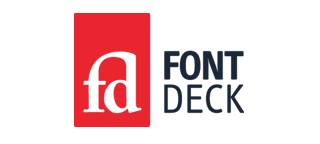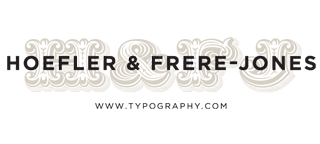Conference
May 3, 2013

Born in Germany, Simone Wolf now lives in Italy, where she runs Type * s, a study that offers business and marketing strategies for international companies in the graphic arts industry who try to sell their products and services in Italy.
Simone has gained two decades of work experience in sales and marketing in the international graphic arts field, 5 of which at Linotype in Germany.


The Hitchhiker’s Guide to Typography - Nina Stössinger from GrUSP on Vimeo.
Insights and perspectives involving time travel, the wonders of space, and magic numbers that hold the answer to a question nobody remembers.
And yes, it’s all about type.
From an old-media background of typography mainly for books and brochures (and with examples from anthills to kitchen utensils, music to maps) Nina will offer screen people a perhaps slightly different look on typography, how to approach it (or how not to), and why you should take it seriously (but there’s no need to panic).

Inspiring Web Typography You Can Do Now - Richard Rutter from GrUSP on Vimeo.
This talk will use real world examples and a little code to get your typographic skills right up to the cutting edge of what is practical and desirable on the web right now.
You'll learn the tricky decisions around font choice and font pairing, concentrating on both practicalities and aesthetics.
Typography has an important part to play within responsive design - this will be explored too.
The typographic power of CSS 3 is still woefully underused - you'll learn the tricks highly skilled typographers have been using for decades and see them applied to the web.

Two Decades of Trajan in Movie Posters - Yves Peters from GrUSP on Vimeo.
Soon after its appearance on the font market more than 20 years ago, the Adobe Original Trajan was embraced by Hollywood.
Now it seems to grace more movie posters than any other typeface.
Its stately and classic character shapes made it the go-to choice for Oscar material.
Yet in recent years the popular font has apparently fallen from grace, and a pretender to the throne is vying to take its place.

Responsive Web Typography - Marko Dugonjić from GrUSP on Vimeo.
Responsive Web Design done correctly is based upon content rather than actual device resolutions, and so typography should adapt to both layout and sizing across content breakpoints.
However, mere font sizing along the typographic scale based upon two-dimensional viewport @media queries is not enough.
Apart from setting the correct balance of the black and the white in letterforms and texts, there are other important factors such as reading distance, information density, screen sharpness and device orientation that also influence the reading process.
Learn to look at typography multidimensionally and enhance the overall responsive experience.

Content‐out design - Aral Balkan from GrUSP on Vimeo.
Experience design is concerned with creating things that communicate with people. Things that empower, amuse, and delight. On the web, and on many other mediums, a large part of that communication occurs through the written word and its nature is shaped by our typographical treatments. Typography gives the written word a stature, a voice, a mood, and emotion. Beyond simply the choice of letterforms and fonts, typography is concerned with the interplay of typographical elements.
In this pragmatic session, Aral Balkan will demonstrate how typographical concerns and a content‐out approach to design shape the way he works from initial content creation to finishing touches. With pragmatic tools, techniques, and workflows, this session will show you, instead of tell you, how you too can incorporate typographical thinking into your everyday workflows and practice content‐out design.

Tea is the new coffee. The book is the new LP. Hinting is the new kerning. Doing is the new thinking - Bas Jacobs from GrUSP on Vimeo.
Fonts. Web. Software. In the last decades the way fonts are being used, shifted into a more and more digital environment. And digital environments keep shifting themselves too. This shift has consequences for those who create type, and of course also for those who use type. With its endless possibilities, the digital age also brought some unexpected complications. Weren't things supposed to become easier? Apparently all simple things can be made complicated. But making complicated things look easy might be more complicated than you excepted. This presentation is a tribute to all technical fuss of type in an evolving digital age.
These go to eleven… - Chris Murphy from GrUSP on Vimeo.
The typographic choices we make shape our content and how it is perceived. We can use type to whisper and we can use type to shout.
As designers we are entrusted to decide whether the typography we craft should become invisible, or reach out and grab our audience by the scruff of the neck. Before we can make that choice, however, we need to get to know our type – its personality, its characteristics and its history. Our content, of course, should also inform our choices.
Whilst its tempting to think of the rich typographic landscape we now find ourselves occupying as a new and undiscovered land, it is - in fact - a land that has been comprehensively mapped before. Thanks to the possibilities web typography offers, we, as designers, can rediscover timeless design qualities, creating work which sit outside of time, whether it’s shouting or whispering.




















